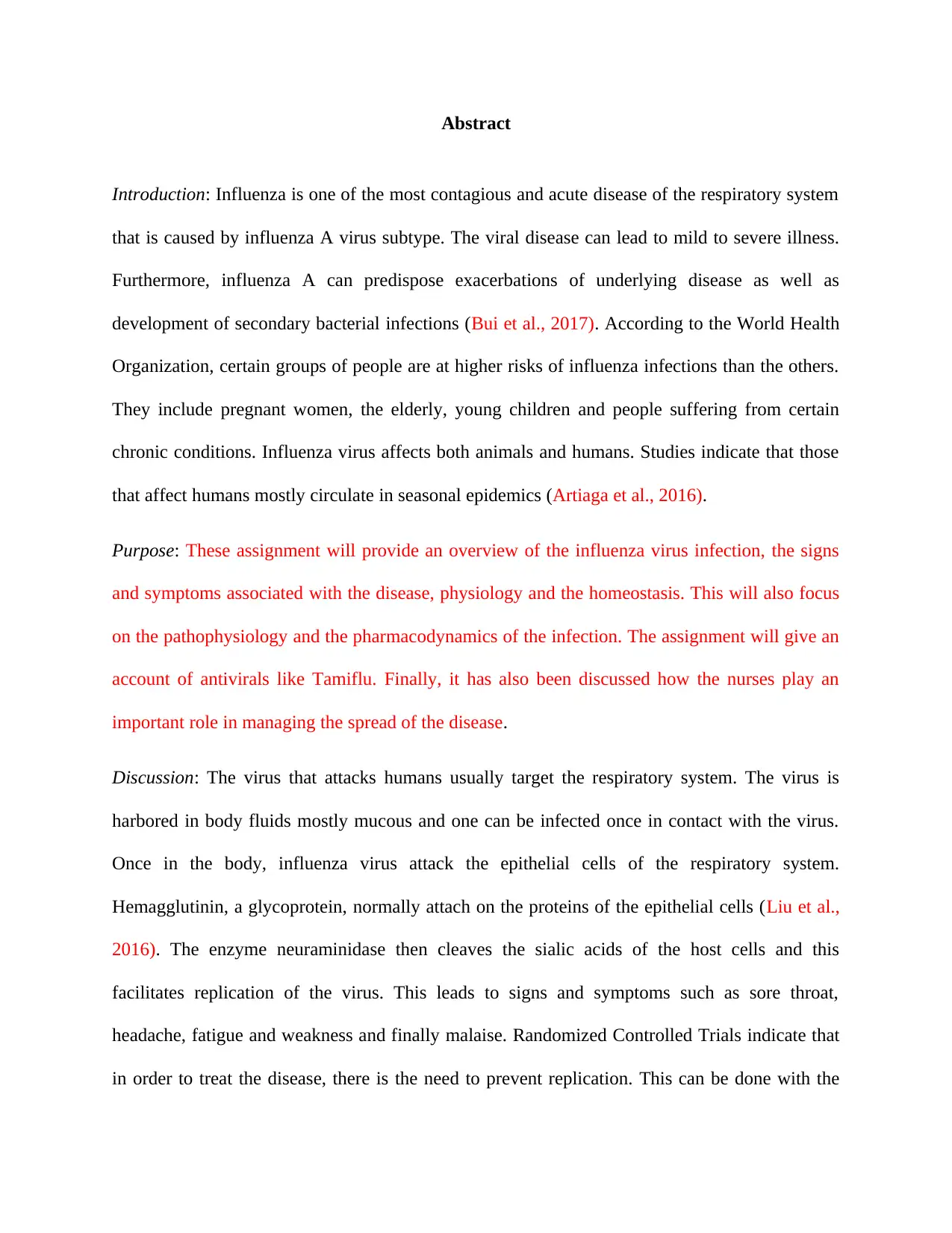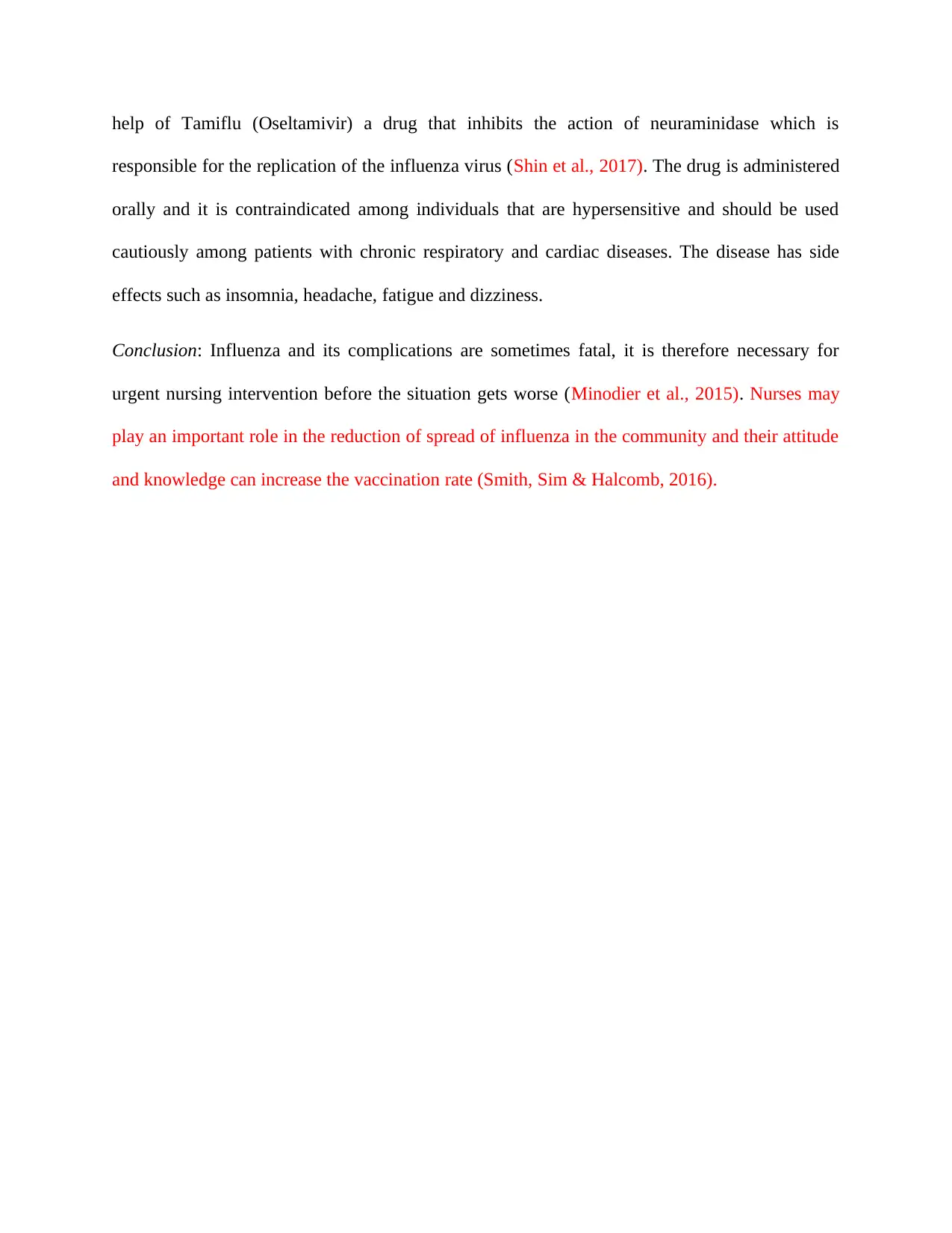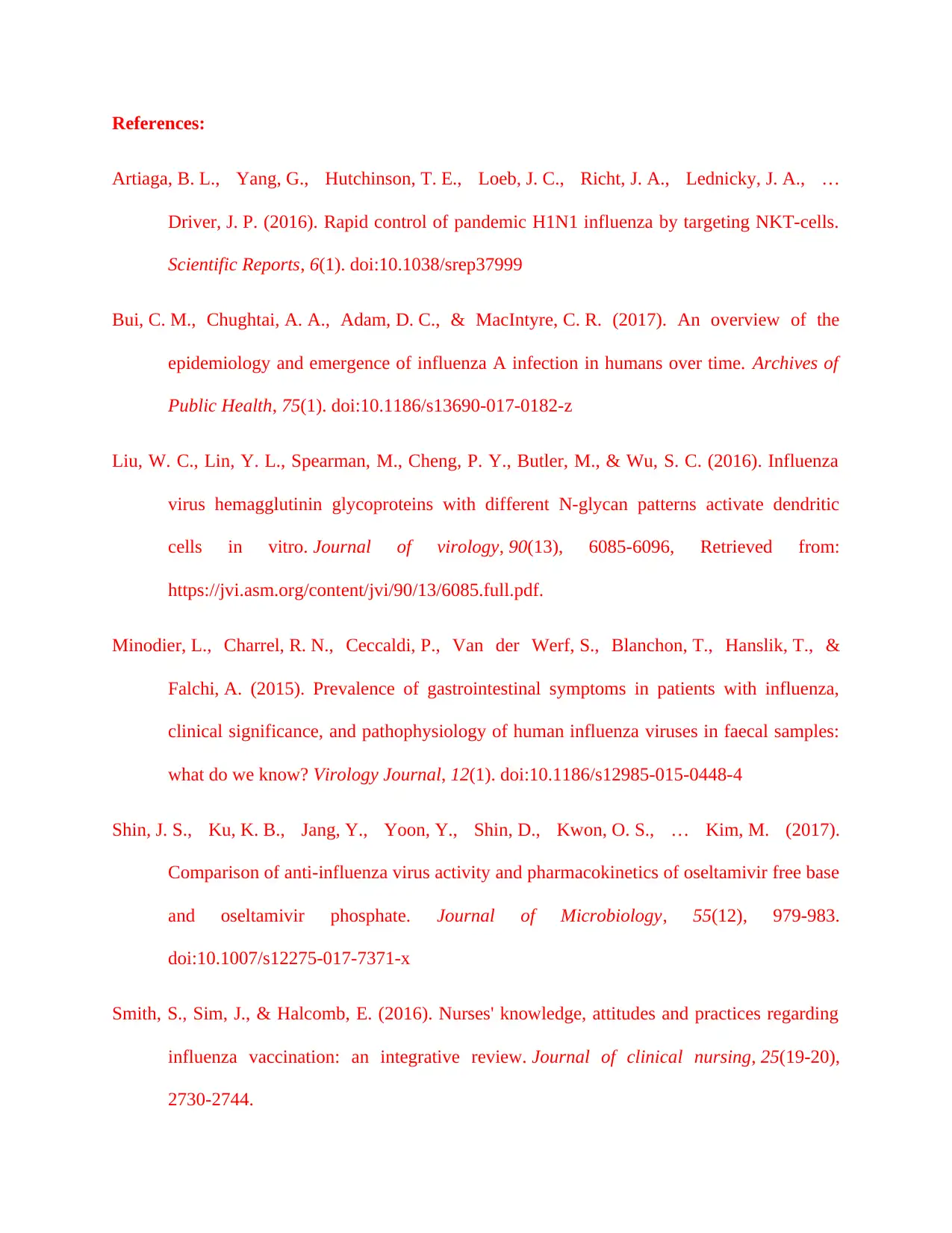Influenza Virus Infection: Overview, Pathophysiology, and Nursing Intervention
VerifiedAdded on 2023/02/01
|3
|839
|86
AI Summary
This assignment provides an overview of the influenza virus infection, the signs and symptoms associated with the disease, physiology and the homeostasis. It also focuses on the pathophysiology and the pharmacodynamics of the infection. The assignment gives an account of antivirals like Tamiflu and discusses the important role of nurses in managing the spread of the disease.
Contribute Materials
Your contribution can guide someone’s learning journey. Share your
documents today.
1 out of 3









![[object Object]](/_next/static/media/star-bottom.7253800d.svg)